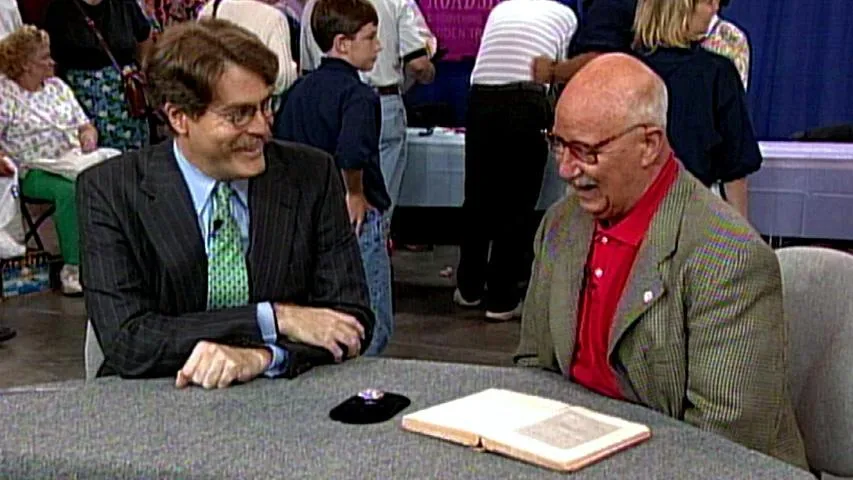GUEST: I picked it up in an antique shop about nine years ago because I like toys, and there it was.
APPRAISER: As a toy.
GUEST: It came with a little story that said it was made in about 1700 in Germany for a little girl in Holland, I believe.
APPRAISER: And I notice sort of a little skepticism in that story.
GUEST: Well, yeah.
APPRAISER: One of the ways that we often date a piece, and specifically a keyboard piece, is to first stand back and look at what we call the casework. At very first glance it's very easy to tell that this piece, of course, is not an 18th-century piece but, in fact, 19th-century, and from these tapered legs, the typical grain painting on the outside, I would put it at about 1850 to 1860, what the furniture experts called "empire." This grain painting was to simulate rosewood, a poor man's version. Rosewood would have been very expensive at that point. It's a child's instrument, actually. You had mentioned that it might be a toy. The inside structure is cast. It's a professionally constructed instrument and I think not a toy but in fact a student instrument for probably a very well-to-do young child to practice on. It plays, and it's in actually remarkable condition. Some parts of it are missing. The music stand, which would have swung out here. And the keys have been not refinished, but over painted. I think a good restorer could bring the keys back to original condition. You bought it at an antique store. Can you tell me how much you paid for it?
GUEST: Couple hundred.
APPRAISER: If I had this in an auction today, I would estimate it in probably the $1,500 to $1,700 range, and I would be hoping for that collector who's dying for this period square piano in this form. I have never seen one of this size before-- in a child's instrument-- and it's a thrill to see it here.
GUEST: Yeah, it's a cutie.











